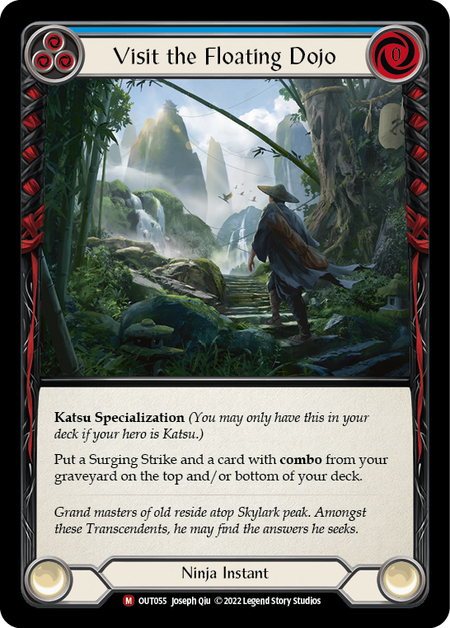In today's Banned and Restricted announcement, LSS took a bold new step in banning specifically the blue and yellow cycles of Bonds of Ancestry. You can read Bryan Gottlieb's explanation of it at the link above; then circle back here for our thoughts on this unprecedented move.


In a short amount of time, Bonds of Ancestry - an important tool in Katsu's kit since Outsiders - has become synonymous with the widest, most punishing turns in Flesh and Blood. And while the card was designed specifically to open new pathways for Katsu, it's recent success has come by way of Zen, the current big bad of the meta.


Perhaps LSS should have seen this coming - but ultimately that's not an issue worth wasting breath on. The matter at hand was a negative play experience at the hands of an impossibly wide combat chain, and at its beating heart was a 9-of 0-for-4/3/2 that tutors a card. In other words, Bonds of Ancestry was an obvious inclusion, practically perfect in every way.
Make no mistake: these kinds of cards are allowed to exist. But generally, they're majestics, and thereby limited to 3 copies in the deck. By cutting out the blue and yellow versions of Bonds (the ones that provide the most flexibility when the turn can't fully utilize them), LSS has functionally made a majestic of Bonds of Ancestry, for gameplay purposes.
As a 3-of red card, Bonds of Ancestry fits much more comfortably into the existing power levels of FAB. Spike turns can and should exist within the schema of many heroes - Ninja being a prime example since day 1, with their hard-to-assemble combo lines. Zen will almost certainly continue to run the card, but the number of games where it leads to a 10-wide combat chain should be severely limited. More importantly, Katsu can continue to run Bonds of Ancestry - and thanks to Visit the Floating Dojo, he can get more uses out of it than Zen, making its connection to him more pronounced.


While LSS has never taken this step before, it does actually relate surprisingly directly to another tool they've utilized in the past: restricting cards to single copies, either initially via the legendary tag or through format restrictions (currently, this is at play in the Living Legend format). In either case, you're cutting a card down to 1/3rd its previous prevalence in a decklist, and it's a fantastic way to allow a card that's too prevalent to continue to play a role in the game without overwhelming it.
Now that this bridge has been crossed, I hope LSS continues to keep it as a tool in their game balance kit. Maintaining a wide array of fixes allows LSS to address issues precisely and with maximum consideration for the competing interests of the fanbase.




